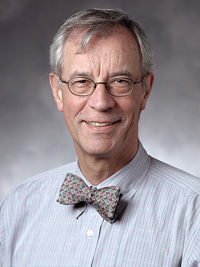In 1960, as a third-year medical student at the University of Freiburg in Germany, I joined the Department of Biochemistry to perform the experimental work for my doctoral thesis. Research in biochemistry — or physiological chemistry, as it was often called in those days — was considered the best approach to understanding the underlying mechanisms of health and disease. My dissertation on “active acetaldehyde” allowed me to take the first steps into the field of science. My mentors encouraged me to pursue my goals in research, and after graduating from medical school I joined the Biochemical Genetics program at Freiburg. Since my long-term goal was to become a hematologist, I turned to the area of red cell biochemistry and explored the abnormalities of red cell enzymes, which are responsible for hereditary hemolytic anemias (e.g., pyruvate kinase deficiency). The leader in this field of research was Dr. Ernest Beutler at City of Hope National Medical Center in Duarte, CA, and I was fortunate to receive an invitation to work in his laboratory in 1971 and 1972. He became my mentor and my lifelong friend.
As a clinical hematologist, under the guidance of Dr. Georg Wilhelm Loehr at the University of Freiburg, I was responsible for the care of patients with acute leukemia. At that time, it was possible to achieve complete remissions with induction chemotherapy, but these remissions were usually short-lived. Death from relapse was typically the unfortunate outcome for those patients. Thus, something more important than studying rare red cell enzyme variants seemed necessary. Then a fortuitous one-day visit to Seattle in 1974 changed my career entirely. There, Dr. E. Donnall Thomas and his colleagues had established the world’s leading center for the transplantation of hematopoietic cells. I became a believer in the concept of transplantation for the cure of leukemia. In 1975, Dr. Beutler recruited me back to Duarte and provided the chance of a lifetime: the responsibility and mission to build a new transplantation program at City of Hope National Medical Center. With the dedicated support and unwavering commitment of many colleagues and staff, we treated an ever-growing number of patients successfully and attained cures for previously hopeless conditions. Approximately 500 transplant procedures were performed during my tenure there.
In 1987, I followed a call to Stanford University to assemble a second, new transplantation program. This program also grew rapidly and succeeded due to another group of young physician-scientists and clinical investigators who accepted the concept that transplantation of hematopoietic cells offered curative potential to patients with hematologic malignancies. I am very grateful to the now more than 5,000 patients who entrusted their lives to our medical teams and me. These brave patients accepted the significant risks of high-dose chemotherapy with or without total body irradiation and of transplant-related complications. The earlier patients in particular paved the way for the advances in the field and the increasing application of transplantation to both malignant and nonmalignant diseases. It is most gratifying to see patients who are now 10, 20, or even 30 years post-transplantation who are not only cured of their malignant diseases, but also leading productive, fulfilling lives.
In 2003, at the end of my career as a physician and clinical investigator, I was provided another opportunity to continue my academic calling. I was asked to establish an NCI-designated cancer center at Stanford University. Under the direction of Dr. Beverly Mitchell, and with the help of my many colleagues from various schools and departments at Stanford University, we were able to coalesce a formidable team of investigators, help prioritize our common goals, and successfully obtain the NCI designation within three years.
Subsequently, one of my greatest pleasures and achievements as an academic teacher arrived in 2007. With my colleagues and the support from the Stanford Cancer Center, I established the first Comprehensive Cancer Research Training Program, a weeklong course that is attended by approximately 125 graduate students and fellows from the Schools of Medicine, Engineering, and Humanities and Sciences. It has become an annual event during which we teach and guide young people toward careers in basic, translational, and clinical research and steer them toward the field of cancer research.
During my career, I also had the privilege of serving as an ASH Councillor and as Chair of the ASH Development Committee. These positions have enabled me to serve the ASH membership and to have an impact on the future of hematology by raising funds that promote the Society’s mission of education, research, and advocacy.

